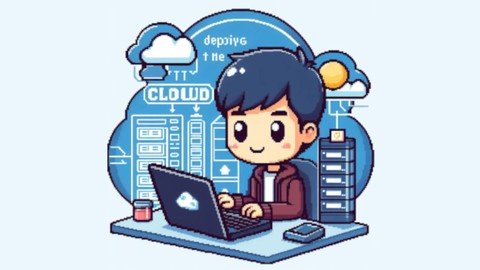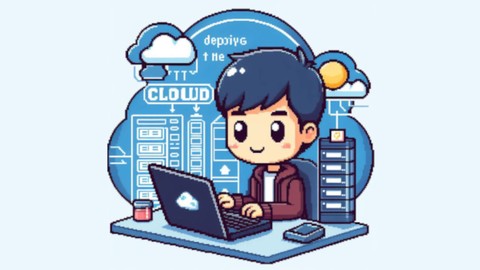
Free Download From Zero To Site Reliability Engineer
Published 4/2024
MP4 | Video: h264, 1920x1080 | Audio: AAC, 44.1 KHz
Language: English | Size: 1015.80 MB | Duration: 3h 3m
Learn About the SRE Workflow
What you'll learn
Learn the basics of site reliability engineering
Create infrastructure using Terraform
Deploy microservices to EKS cluster
Setup CI/CD pipelines
Install a monitoring solution to monitor cluster and application resources
Check vulnerabilities in Terraform code and kubernetes cluster
Requirements
Foundational knowledge of AWS
Basic understanding of CICD pipelines using Github Actions
Beginner level skills in Terraform
Description
In today's rapidly evolving landscape of Software as a Service (SaaS) environments, microservices architecture has emerged as a critical approach for building scalable and resilient applications because of this site reliability engineering (SRE) skillset has become highly desirable in the workforce. This course is designed to equip learners with the essential skills and knowledge needed to deploy a microservice to AWS EKS using Terraform and Github Actions. Participants will embark on a journey through the core concepts of SRE, understanding its role in bridging the gap between software development and operations. Through a series of hands-on exercises, learners will gain proficiency in applying SRE principles to enhance the reliability and resilience of mission-critical systems.The course will focus on practical implementation using Terraform, an infrastructure as code (IaC) tool, to provision and manage AWS resources needed for deploying microservices on EKS. Participants will master Terraform's declarative syntax to define infrastructure components such as EKS clusters, networking configurations, and security settings, ensuring consistent and repeatable deployments.Furthermore, learners will explore the power of Github Actions, a continuous integration and continuous delivery (CI/CD) platform, to automate the deployment pipeline for the infrastructure and accompanying microservice example. They will discover how to configure Github Actions workflows to trigger builds to AWS EKS seamlessly, enabling rapid iteration and deployment cycles. Learners will also take a look at vulnerability scanning so that security issues can be identified and mitigated during the development process.You will learn the following:GitTerraformAWSVisual Studio CodeKubernetesContainersGithub ActionsCICD PipelineVulnerability scanningInfrastructure as code
Overview
Section 1: Introduction
Lecture 1 Introduction
Lecture 2 Course Plan
Lecture 3 Course Project
Section 2: Setting Up Our Workstation
Lecture 4 Installing Git
Lecture 5 Installing Terraform
Lecture 6 Installing Docker
Lecture 7 Installing an IDE and Text Editor
Lecture 8 Installing AWS Cli
Lecture 9 Creating a Github Repository
Section 3: Creating the VPC and Kubernetes Cluster
Lecture 10 Creating an EKS Cluster Using the AWS Console
Lecture 11 Setting Up Terraform
Lecture 12 Creating a VPC
Lecture 13 Creating an EKS Cluster
Lecture 14 Checking for Vulnerabilities in the Code
Lecture 15 Deploying a Microservice Application to EKS
Lecture 16 Cleaning Up
Section 4: Creating a Deployment Pipeline
Lecture 17 Creating a Github Actions Pipeline Part 1
Lecture 18 Creating a Github Actions Pipeline Part 2
Lecture 19 Deploy Microservice Demo to EKS Part 1
Lecture 20 Deploy Microservice Demo to EKS Part 1
Section 5: Monitoring
Lecture 21 Deploying Kube-Prometheus-Stack Part 1
Lecture 22 Deploying Kube-Prometheus-Stack Part 2
Lecture 23 Connecting to Prometheus and Grafana
Section 6: Conclusion
Lecture 24 Conclusion
Beginner level engineers looking to explore site reliability engineering,Anyone looking to advance from infrastructure or tech support to an SRE role,Engineers who are looking to automate their current workflows,Novice engineers looking to expand their deployment strategies to a containerized approach
Homepage
Recommend Download Link Hight Speed | Please Say Thanks Keep Topic Live
No Password - Links are Interchangeable







